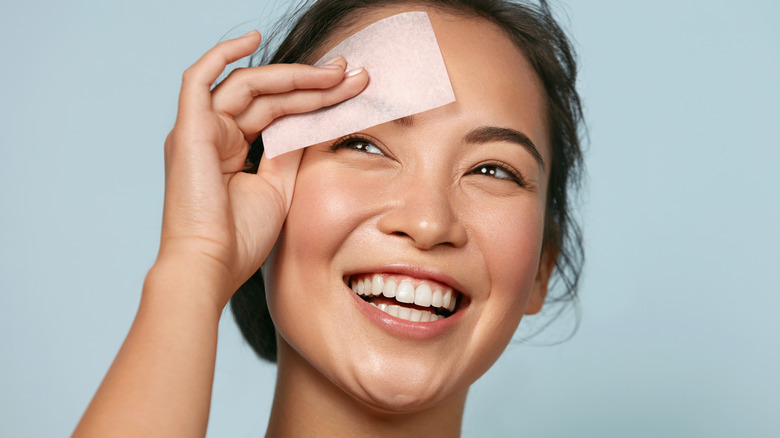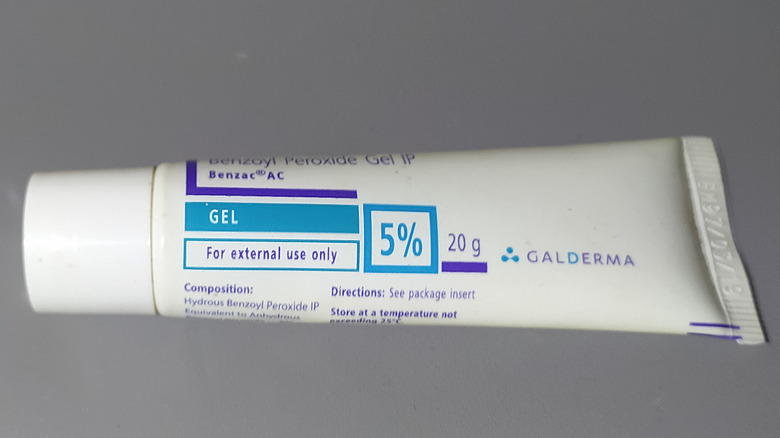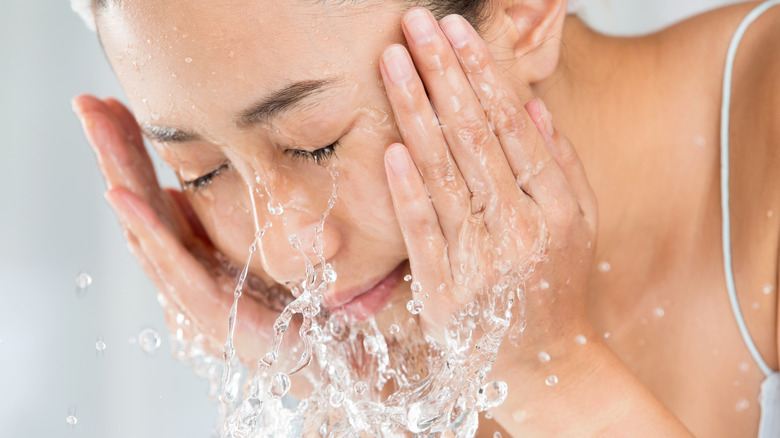What Is Sebum And How Do You Keep It Balanced
If you can pardon an innocent pun, people with oily skin are like walking fountains of knowledge. And oh, what they could do with this knowledge if only they formed a club. They deal with a skin issue that affects their day-to-day lives, dutifully following written and unwritten rules to keep what can feel like a fountain of oil from pooling on their face. The more obvious rules include wearing little, if any, foundation when it's warm outside, not resting their chins on their hands, and not going anywhere without at least one oil-absorbing sheet tucked in their pockets (via the American Academy of Dermatology).
These are often called "grease sheets," and they've become staples for many. What everyone eventually learns, though, is that oily skin typically results from sebum. As it turns out, people can have too much sebum (resulting in oily skin) or too little (resulting in dry, flaky skin), according to Medical News Today. Unfortunately, The Derm Review adds that, speaking generally, oily skin is here to stay. Since you perhaps can't get rid of it entirely, the best you can do is learn how to "balance your complexion."
The good, bad, and greasy about sebum
Sebum is an oily substance produced by the sebaceous glands, which are found on the surface of the skin (via Nivea). Medical News Today adds that most of these glands hover on the face, scalp, and chest, but they are ultimately found everywhere on the body except for on the soles of your feet and your palms. You could say that sebum lies in wait, not causing any oily trouble until it mixes with lipids in skin cells and sweat in hair follicles. When the follicles fill to their limit, sebum spills out onto the surface of the skin, making its liquidy, glistening presence known and issuing a silent call for a grease sheet. Since sebum is controlled by hormones, influences like puberty and menstruation can affect how much sebum the glands make.
To keep blemishes and breakouts under control, people with oily skin may use over-the-counter products that contain benzoyl peroxide, glycolic acid, or salicylic acid. They have to be vigilant about their skincare, but they may curse sebum until they recognize that it helps moisturize and protect their skin (via The Derm Review). Perhaps no group knows this better than people who produce too little sebum. Their skin may turn dry to the point of not only flaking but also bleeding. They may need to be diligent about moisturizing and maybe using products that contain alpha hydroxy acids, glycerol, or hyaluronic acid.
Good skincare starts with cleansing
While you can trace your facial secretions to your sebaceous glands, other factors affect the condition of your skin, too. These influences include genetics, diet, skincare products, hydration levels, stress, sleep, and climate (via The Derm Review). Since you have no control over overactive or underactive sebaceous glands, you also have no control over whether your skin is oily or dry as a result. The best you can do, then, is to try to keep your skin balanced. Following a sensible skin-cleaning routine recommended by the American Academy of Dermatology (AAD) will serve you well.
Use a gentle cleanser on your face twice a day —in the morning and before bedtime. Wet your face with lukewarm water and massage the cleanser into your skin with your fingers. (Even the softest washcloth you own may irritate your skin.) Rinse your face with water and let it air-dry or dab it with a soft towel. Even if you have oily skin, apply moisturizer, though make it a light one. If you use eye cream, dab a semi-circle of cream dots under your eyes and then tap them — don't rubt them — into your skin (via Healthline). As the AAD notes, there is no one-size-fits-all skincare routine. Each routine could include a bevy of different products, but they all start with creating a clean slate.


